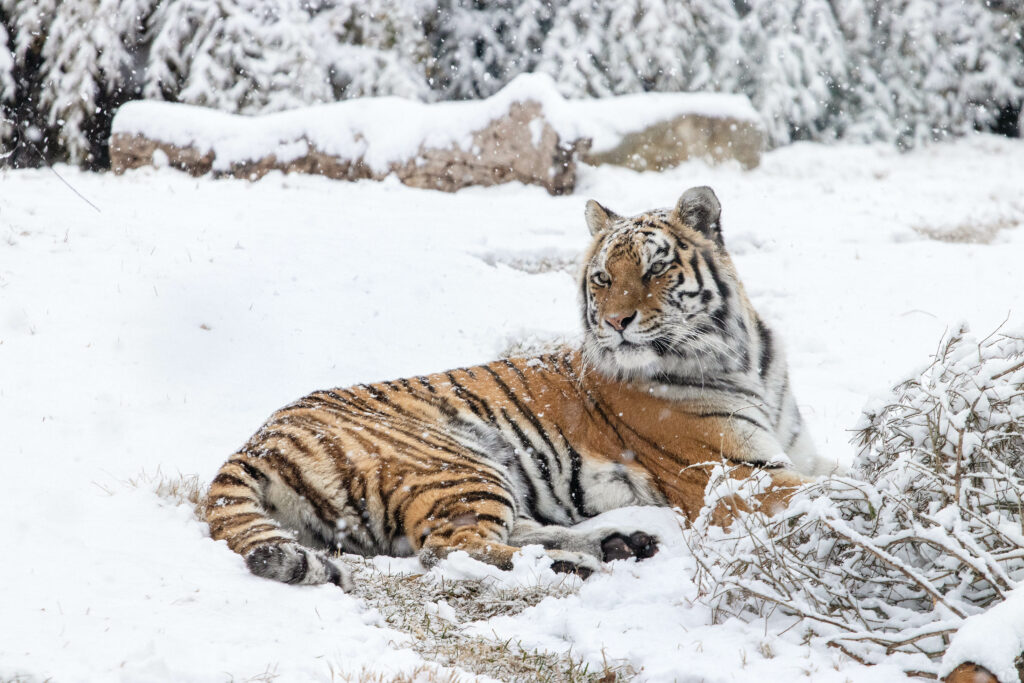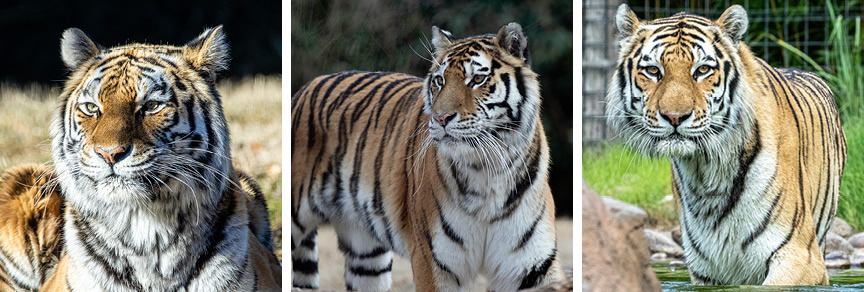They’re cereal mascots, the inspiration for an 18th century poem, and a young boy’s companion at sea in an Oscar nominated film. With striking orange fur and black stripes, it’s easy to understand why the tiger is so prevalent in pop culture.
Tigers are the largest living cat in the world. An apex predator, these solitary cats are responsible for keeping the population of prey animals- like boars and deer- in check. Tigers are strict carnivores, meaning they only eat meat.
“The protein in an all-meat diet takes a long time for the body to digest. It takes a lot of energy,” Zookeeper Jody Sentel said. “They can sleep 16 to 20 hours a day while they’re digesting. So, they’re very naturally lazy.”
There were once nine different species of tiger, but due to urban expansion and poaching, there are now only six species of tigers.
The Sedgwick County Zoo is home to three Amur tigers. This tiger species lives in the coldest climate out of any tiger. Their fur is also the thickest and they sport a scruff of fur around their neck that helps keep them warm.
“They have the palest orange coat and the fewest stripes to help them blend in with the snow and cold,” Sentel said. “They are the only tiger that is adapted for the harsh, cold, northern climates.”

Since 2020, our tigers have lived in the Slawson Family Asian Big Cat Trek, but in 2009 this area was known by a different name- the Slawson Family Tiger Trek.
In 2013, SCZ welcomed tiger cubs Natasha and Tsar. Natasha still lives at SCZ.
“I call her our wild child,” Sentel said. “She’s very energetic, playful, and full of all the sass.”
SCZ is home to two other tigers. Callisto is our youngest tiger and turned seven this year.
“Callisto is a Nosy Nellie,” Sentel said. “She’s always preoccupied with what’s going on with the other cats and what’s going on around the exhibit.”
Our oldest tiger, Grom, is 15, and on the smaller side as far as male tigers go. Male tigers weigh up to 600 pounds, but Grom tips the scale at just around 340.
“Grom is our laid-back dude, he’s super calm.” Sentel said. “He is the one that most people see in the pool most often. He loves to go for a swim.”
Tigers are one of the only cats that enjoy swimming. When visiting the tiger habitat on warmer days, you might see the cats lounging in the shade or enjoying a dip in the pool.

In the wild, a single tiger can roam over 700 square miles in order to find food and to mate. This area can range in topographies and elevation, but on average they reside in birch forests. However, these forests that the tiger calls home are decreasing in part due to human expansion. But there are other factors contributing to the decrease in tiger population.
“Tigers were at the brink of extinction at one point thanks to poaching,” Sentel said.
Belief that tiger’s body parts have medicinal value also drives poaching. The “healing power” of certain tiger parts is a complete myth.
Retaliatory killing also results in tiger deaths. Due to their decreased habitat area, tigers will wander into areas populated by humans and sometimes eat livestock. The farmers, devastated at the loss of their livelihood, seek out tigers and kill them in revenge.
Organizations like the Wildcats Conservation Alliance, which the Sedgwick County Zoo supports financially, work to help save the tiger population. From anti-poaching campaigns and conflict mitigation to population and health monitoring, being educated on conservation can make a big difference.
“They put big anti-poaching campaigns into effect and that’s what helped the population rebound in the wild,” Sentel said. “But they are still in danger. It is estimated that there are anywhere from 250 to 500 tigers in the wild.”
It’s important that we work to protect these unique animals. Every tiger is unique – literally. No two tigers have the same stripes, in fact, if you were to shave a tiger their stripes would still be visible on their skin.
“It is common to see similar stripe patterns in related individuals, but they will still have distinct differences,” Sentel said.
So, the next time you visit the Sedgwick County Zoo, take a trek to see the tigers.